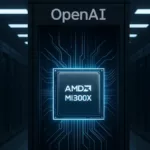In the 1960s, engineers developed a primitive form of Employee Information System which helped companies better organize employee reports and administrative data. Since then, the development in technology has transformed this early prototype into an advanced reporting and decision-making system that aids in creating a working environment which offers employees advantages like accurate and up-to-date information, self-service capabilities, and a more interactive workplace.
Most importantly, throughout the last decade the emergence of human resource information system (HRIS) software has helped to transform the concept of the common employee; instead of being just a means of production, employees are now seen as a key resource that helps to give companies a competitive edge. In order for your business to be as ambitious as possible, having the proper HRIS system is a must.
With several different systems to choose from, however, selecting the perfect software provider for your company can be difficult. When shopping for your ideal HRIS software, keep these 5 key functions in mind.
1. Flawless Feedback
The objective of HRIS software is to help businesses tackle the everyday demands of effective HR services like accounting, management, payroll, hiring, and more. Because these systems are so high-functioning, many lack the concise interface that users desire. When shopping for your HR system, make sure that the software allows common tasks to be completed quickly and effortlessly by any user. The less your employees will have to think about the actual software, the better the system typically is. Keep in mind, too, that neither you nor your staff really want to be using the software – you simply want to complete your job as simply as possible.
Your HR software should also assimilate useful, flawless feedback like progress indicators, process explanations, and data validations that assist in making the human resource aspect of your business run smoothly. Not only will a clear, simple HRIS help lower employee product abandonment, but it will also help your HR team improve employee compliance, both which ultimately result in a higher ROI.
2. Software-as-a-Service (SaaS)
Software-as-a-Service (SaaS) or “on-demand” software is a centrally hosted model of software licensing and delivery that is issued on a subscription basis. With easy installation and quick deployment, SaaS-based solutions have transformed the world of HR technology. HR departments also benefit from SaaS features like seamless automatic upgrades, safe and secure platforms, and 24/7 access which eliminates the need for companies to invest in pricey hardware for system upgrades.
More than anything, having a SaaS feature included in your HR software means that you can stay connected to your business from anywhere, and that your company’s internal content will always be accessible over the Web (in a secure manner). This allows job applicants to apply remotely, gives you the capability to upload vital documents like training materials, and lets employees communicate with other coworkers.
3. Easy Integration
An HR software program that’s difficult integrate will ultimately cause your company more harm than good. When shopping for your company’s HR system, look for software with great aesthetic and technological design. Features like these typically indicate that the program is capable of executing multiple functions at once while simultaneously using current data to cultivate additional forms and documents that aid in your company’s overall HR efficiency.
4. Natural Workflow
With multiple users accessing your HR software, having a system that eases users through the process is a must. The best HR software programs are designed with human nature in mind. They give you, your employees, and your potential hires a platform that is easy and natural to use. Systems with natural flow typically have indicators such as:
-
Important, high-value information in big, bold font
-
Critical process information in prominent areas of the screen
-
Intuitive guidance to areas of frequently-accessed information
5. Attractive Design
Lastly, HR systems should be aesthetically pleasing for all users. While each HR software system differs, you should always elect for programs with universally attractive designs, especially if your company requires complex user processes and workflows. Contrary to common belief, uncluttered design and ample white space actually leave users feeling more confident in their ability to navigate and conquer the process, whereas complex interfaces make users feel confused and insecure.
Furthermore, clean aesthetic design provokes positive attitude and leaves users feeling happy. By choosing an HR system that is attractive and tasteful, you can solve a complex company challenge with a simple, stylish solution.








